-
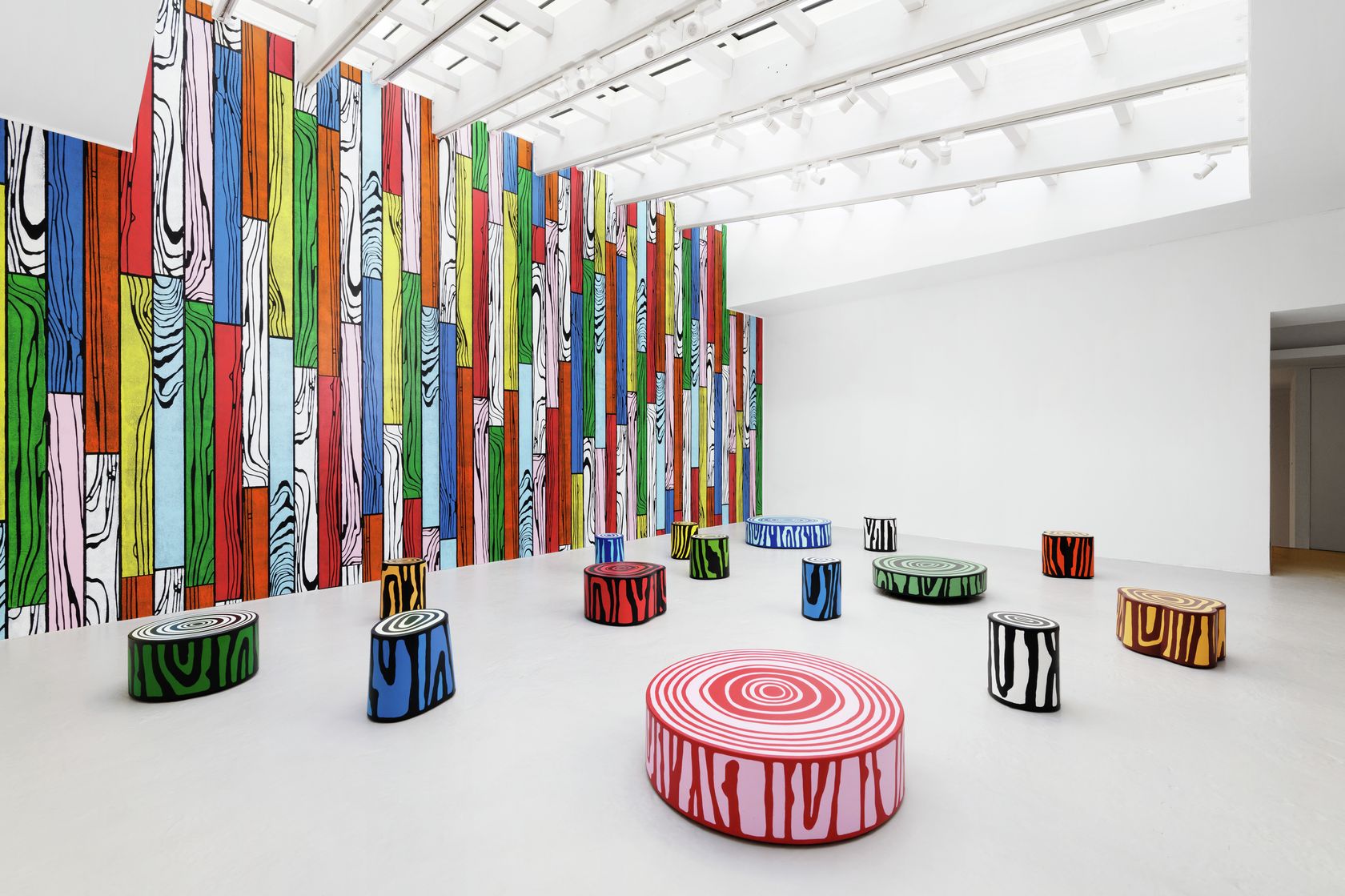 1/7
1/7
Richard Woods, Harvest
-
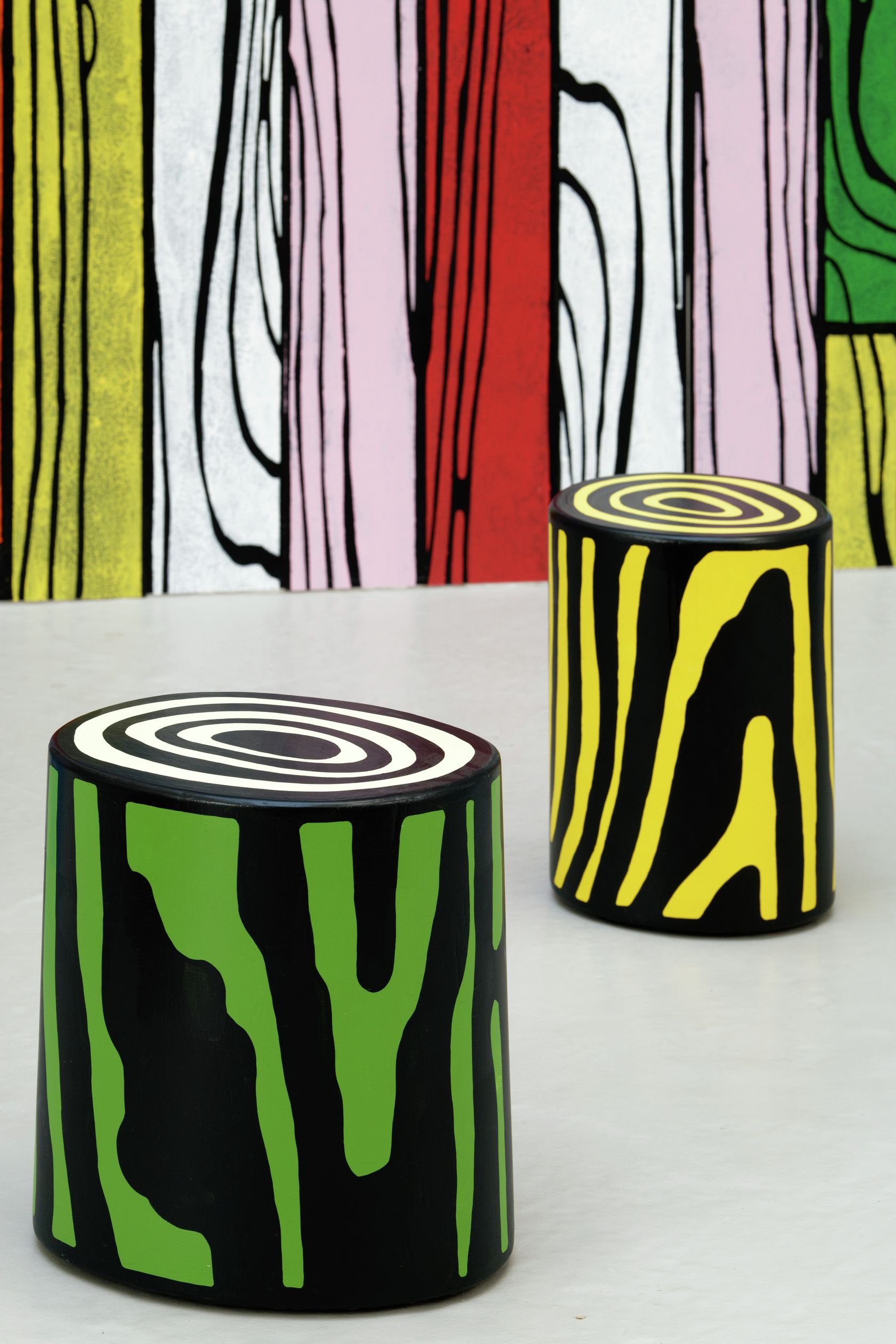 2/7
2/7
Richard Woods, Harvest
-
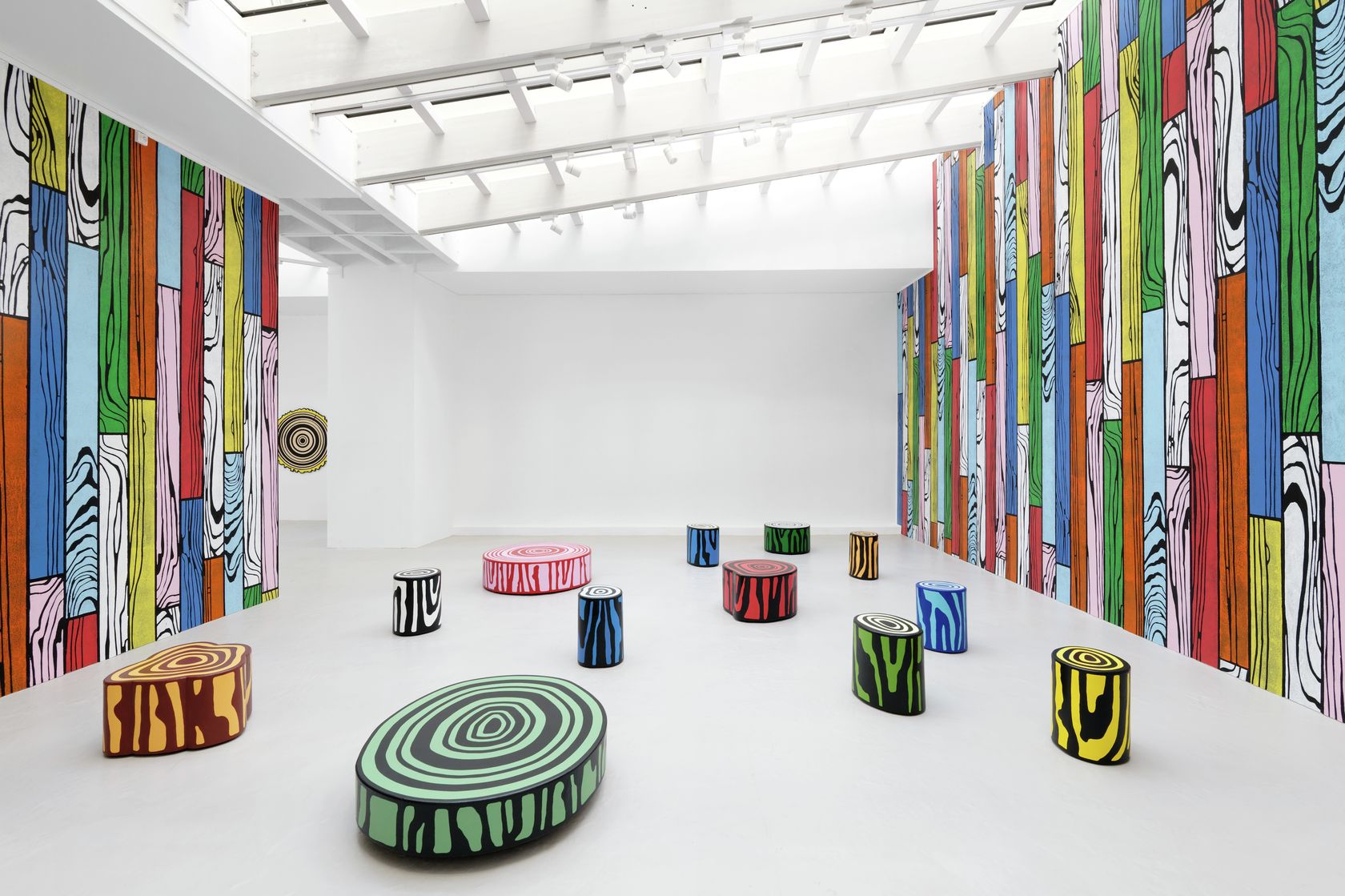 3/7
3/7
Richard Woods, Harvest
-
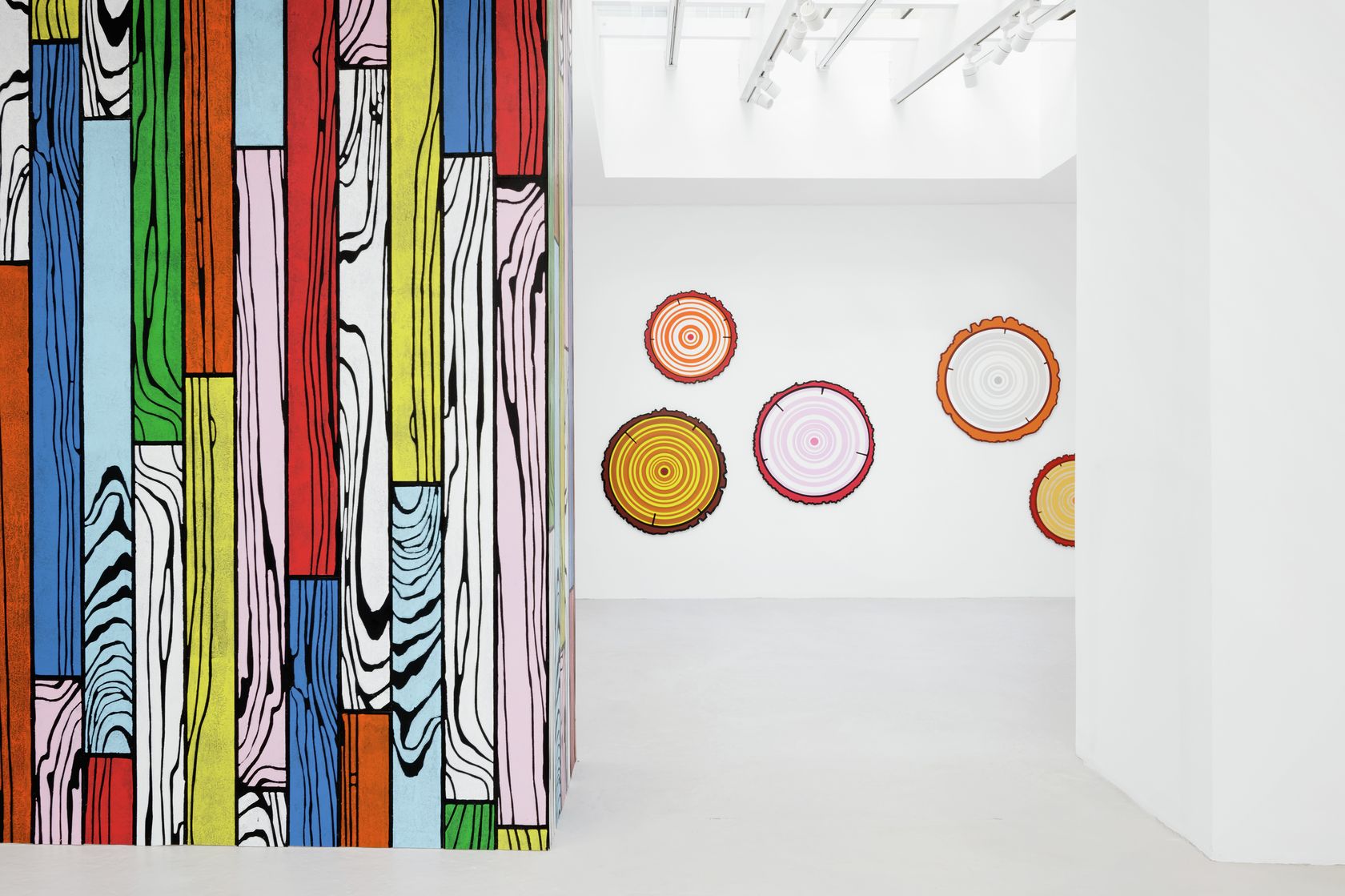 4/7
4/7
Richard Woods, Harvest
-
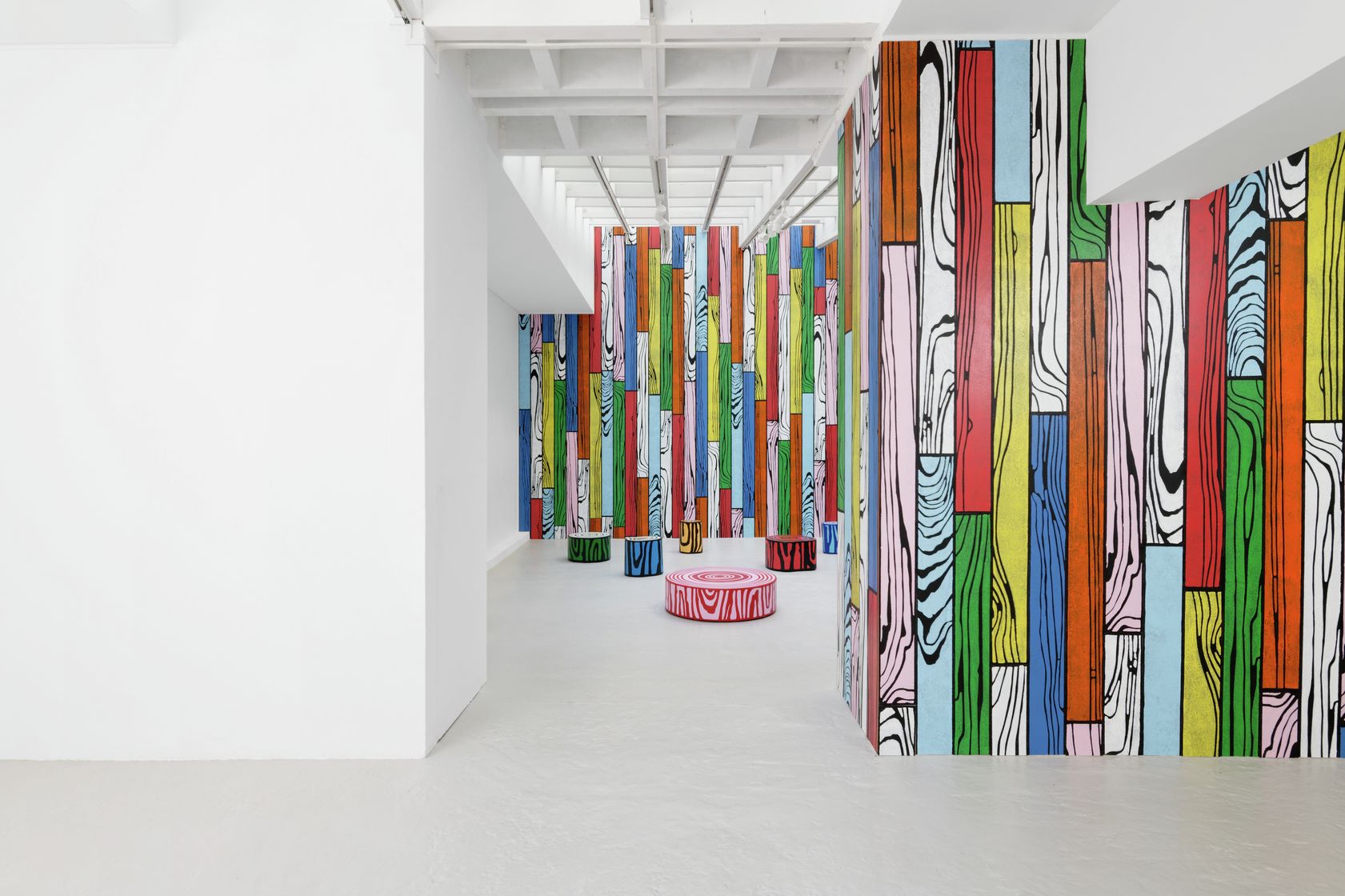 5/7
5/7
Richard Woods, Harvest
-
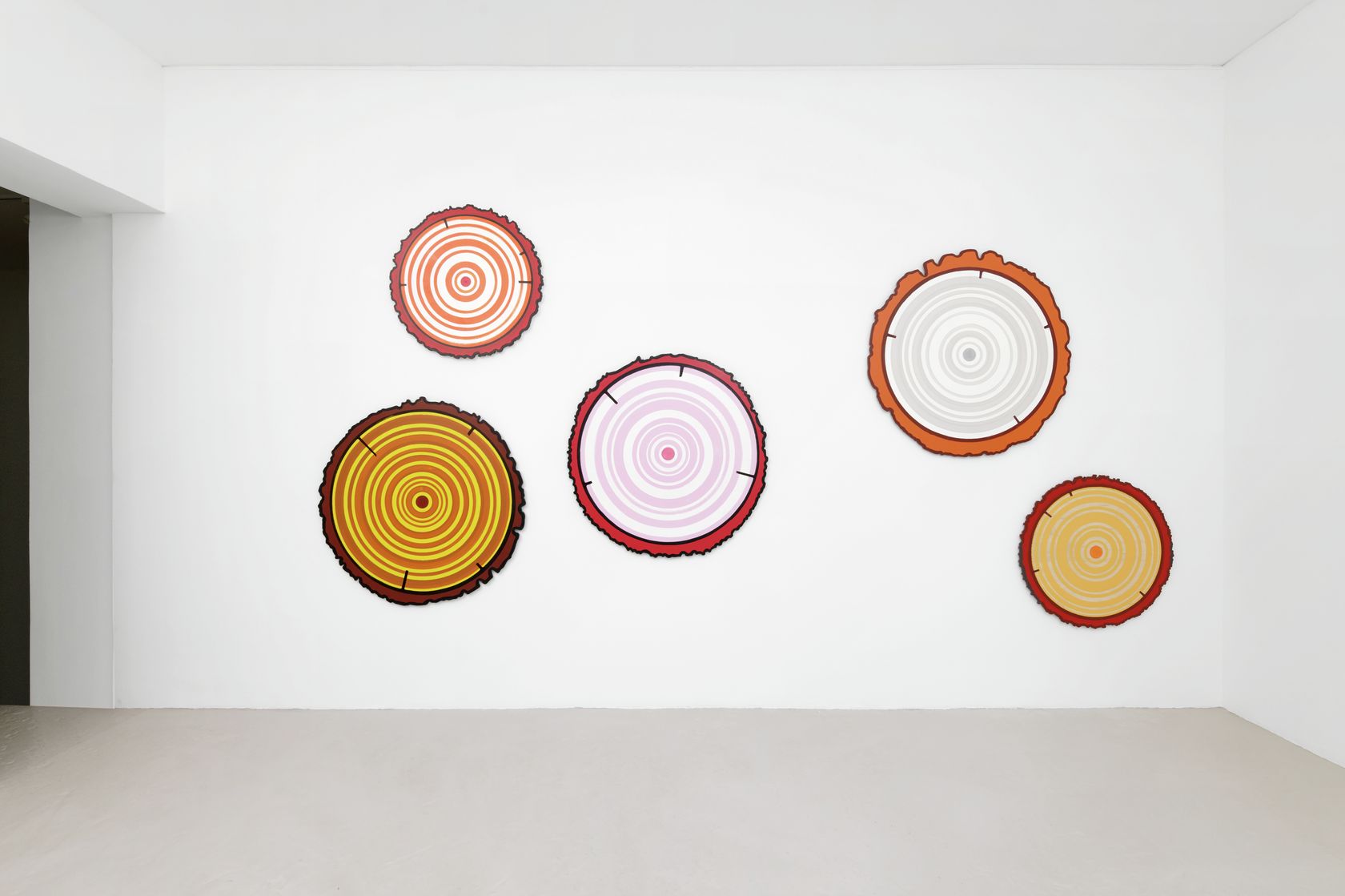 6/7
6/7
Richard Woods, Harvest
-
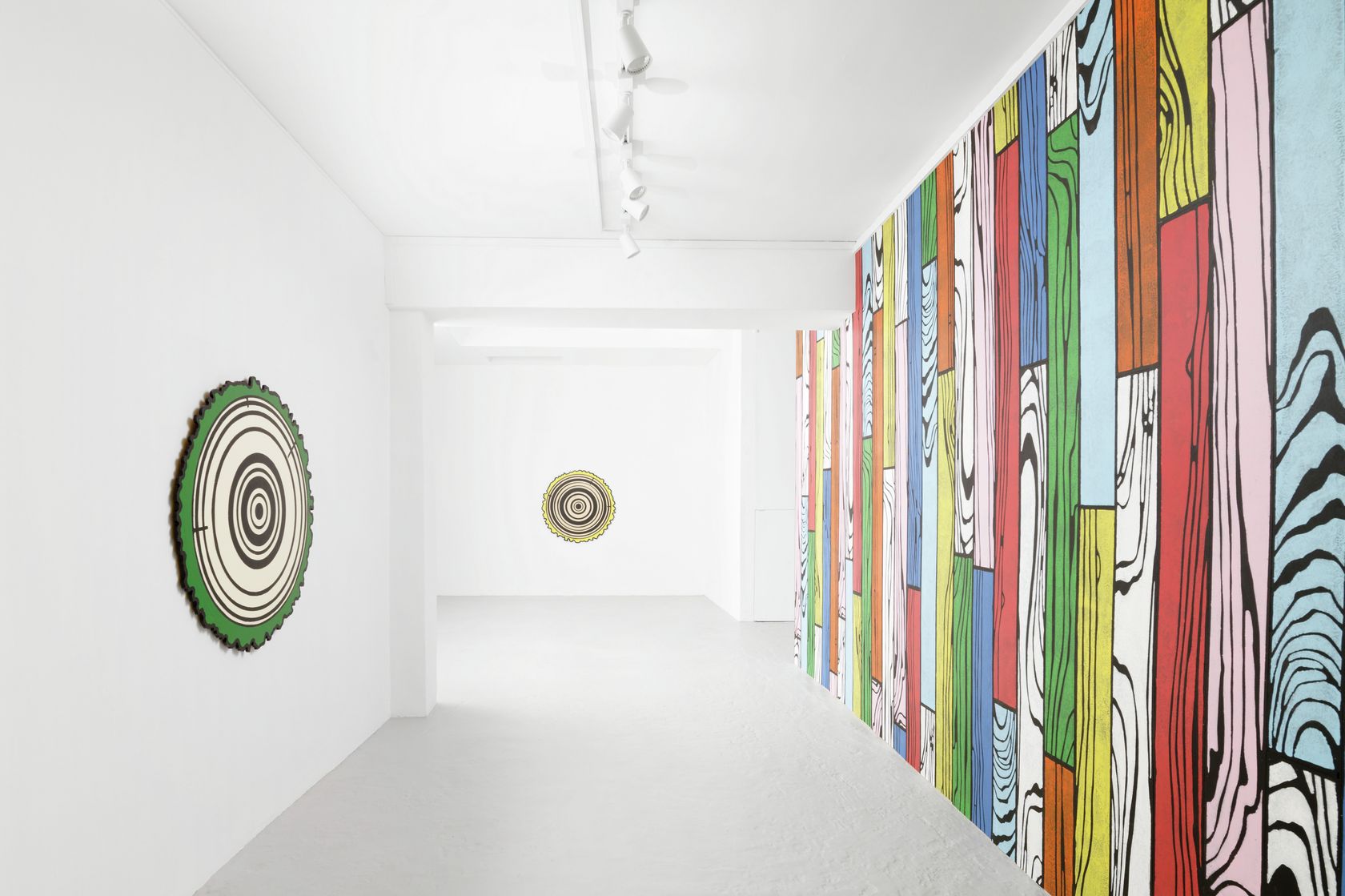 7/7
7/7
Richard Woods, Harvest
Armed with a particularly playful mindset, Richard Woods eludes any ambivalence of excessively precise terminology within his oeuvre, which flirts with installation, décor and design, while remaining imbued with a thoroughly pop aesthetic.
Researching the biography of the British artist Richard Woods, born in Chester, Cheshire in 1966, can turn out to be a little confusing at first, in part due to the number of people sharing the same name… The artist we are interested in graduated from the Slade School of Fine Art in 1990, thus coinciding with the emergence of the Young British Artists movement. The question of whether one’s surname influences one’s future path, comes to mind in the case of Richard Woods, who is, quite naturally, obsessed with the medium of wood. He recalls a pivotal childhood memory in which “there was a small wooded area behind my parent’s house, made up of fifteen or twenty trees, which disappeared from one day to the next. The farmer had chopped them all down, felling them in such a way that the stumps revealed the trees’ growth rings. I started searching for one that matched my own age, and then one corresponding to the age of my father, who seemed quite old to me at the time… I was recently reminded of this event, and I think of my new series of stumps as the latest addition to my love affair with trees and my thoughts on the passage of time…”
For his first solo exhibition at Semiose, Richard Woods has come up with an evidently fake décor that represents an idealized version of nature, made up of sculptures that, like tree stumps in a forest, provide a place to sit and reflect… Taken as a whole, this installation evokes impressions of timelessness, of a kind of shelter or protection, all of which add to the underlying tautology of the subject. For example, Richard Woods insists that the veined patterns of wood used for his planks and stumps should be… wooden. He thus encourages a conversation between the machined materials that cover the walls and the rounded stumps that sit on the floor, creating a simple demonstration of the idea of cause and effect. This conceptual aspect is complimented by a reference to the Arts & Crafts movement that was born shortly after the industrial revolution in Britain, and which reflected a certain anxiety concerning progress and a desire for a return to more poetic times, as well as being a project whose aim was to make beauty accessible to as many people as possible. The artist more readily cites William Morris—himself a devotee of the forest—than any of his contemporaries. It is also essential to him to be able to produce all his pieces in his studio. This relationship with the actual making of things is underlined by his personal backstory, and his experiments with various mediums and scale are related to his own physical experience—during his studies and at the beginning of his career, he worked on construction sites. “When I started out, I was perhaps a little isolated in my thinking,” the artist continues, “but today, there’s a massive return towards manual work, while at the same time, digital technology is becoming more and more advanced. We find ourselves in the middle of a marriage of high and low technologies and practices, combined with a more laid-back aspect of being able to present works, which for some, might even seem utilitarian…”
With their strikingly graphic style and bold colors, Richard Woods’ works are a pure joy to behold. He uses exclusively industrial colors, that he neither alters nor mixes, in order to remain in a vein that he describes as “realistic.” “Again,”he explains, “I love the dichotomy between real and artificial tones, when they’re applied in an environment that refers to the natural. The language produced by these colors is the same as that found in commercials, store-fronts or in shops themselves, all aimed at the general public. This allows me to concentrate on the graphic side of things.” He happily concurs when asked whether his work can be associated with that found in comic books or with a certain continuity of Pop Art: “My work is completely invested in those areas, as I try to reflect the world as it is.” Hence also the pleasure he takes in laying out his work on floors or walls… Although Richard Woods avoids any sweeping ecological statements, he does tackle certain important social issues, such as the gentrification of our cities and in particular his own neighborhood in East London, where he has built himself a wooden house. As he concludes “I don’t comment directly on political matters, but about the way images can become imprinted in our minds and stay with us. I look at how various elements connect and develop them formally through the pieces of furniture that complete the installations.” It should also be remembered that the Young British Artists were also highly critical of consumer society and its excesses and most notably certain addictions… This point of view, reinforced by a touch of dark humor, is also largely present in the work of Richard Woods. For a more explicit understanding of this aspect of his practice, one merely needs to take a look at the pictures of a house floating among the boats in Folkestone harbor—a work created for the town’s Triennial in 2017—, the installation Foreverhome, a cottage that has seemingly fallen into a lake at Fountains Abbey in Yorkshire, or the over-sized drawing of a simplified house that Woods created in the grounds of Houghton Hall in Norfolk… So many incongruous and poetic intrusions.
For this organic (from a certain point of view) exhibition at Semiose, Richard Woods has concentrated on trees, depicting all the signs of the passage of time, while also demonstrating the infinite possibilities when playing with the lines in the grain of the wood, with all their curves and whorls that produce multiple rhythms within the works. As much a graphic All-over as a décor, the exhibition invites the viewer to “willingly suspend belief” and “imagine” her-or-himself at the heart of a forest. The forest is a symbol of certain deep-seated fears and a reflection of our unconscious in the sphere of psychoanalysis. It is also the starting point for many fairy tales and in the context of this exhibition represents the beginning of a whole new set of narratives for all of us.
Marie Maertens
(Translation: Chris Atkinson)